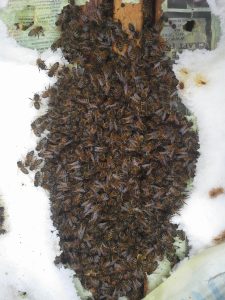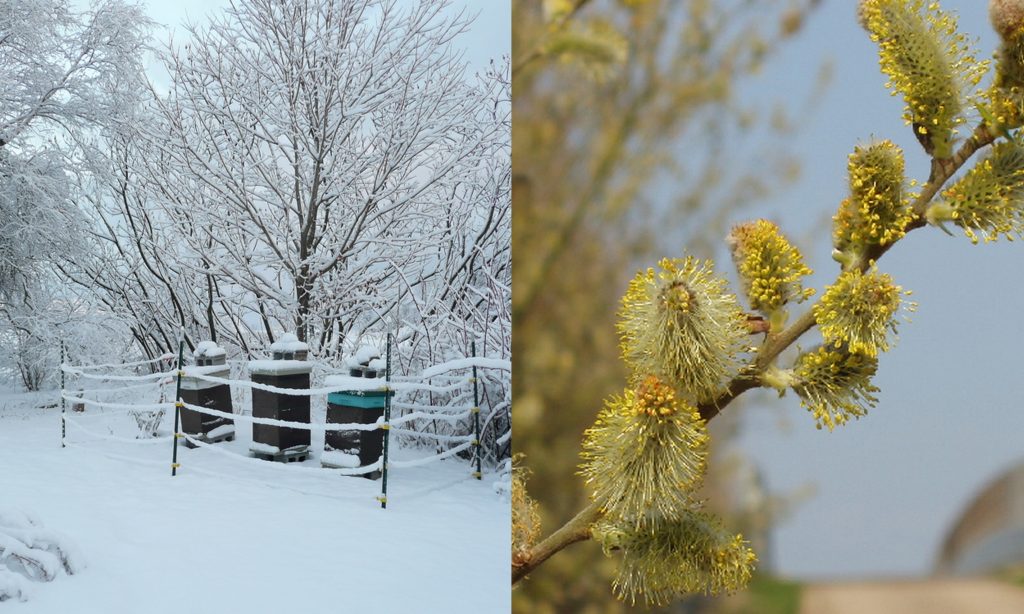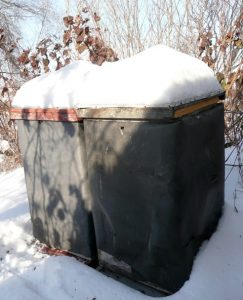Our Bees are Alive, Spring 2013
 Starting around March 20 each season, we make the rounds in the scattered patches of snow and check on how our honey bees came through the winter. I look forward to being out on the land, and though the days can be cold and raw, there is a great warmth in the returning of the light and promise of Spring in the air. We delight in seeing the bees that are alive, these hives having made it through our long Northern winter. This is entwined with the sadness of finding that some of the bee hives did not make it and are dead. Often, the bees that have passed on have a box of honey left, that they do not need, and this is moved to the bee hives that are alive, and often light in weight and in need of honey. The hives with insufficient stores would not make it to the days of Spring when the flowers will provide them with enough nectar and pollen to sustain their lives. In transferring the honey from one hive to the next, I feel a renewed relationship with the bees and the help that we give them.
Starting around March 20 each season, we make the rounds in the scattered patches of snow and check on how our honey bees came through the winter. I look forward to being out on the land, and though the days can be cold and raw, there is a great warmth in the returning of the light and promise of Spring in the air. We delight in seeing the bees that are alive, these hives having made it through our long Northern winter. This is entwined with the sadness of finding that some of the bee hives did not make it and are dead. Often, the bees that have passed on have a box of honey left, that they do not need, and this is moved to the bee hives that are alive, and often light in weight and in need of honey. The hives with insufficient stores would not make it to the days of Spring when the flowers will provide them with enough nectar and pollen to sustain their lives. In transferring the honey from one hive to the next, I feel a renewed relationship with the bees and the help that we give them.
Todd Hardie

